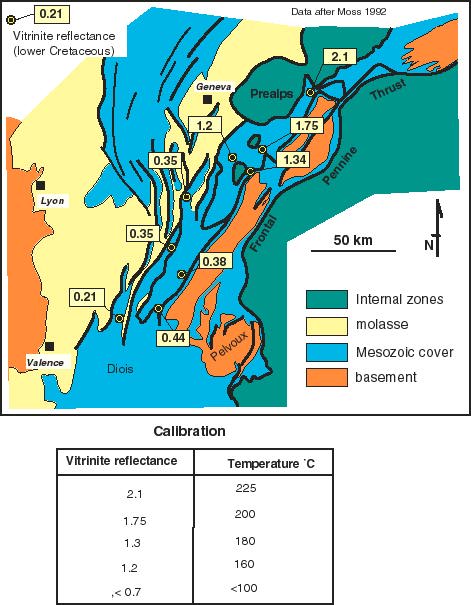
| Return to contents |
The way rocks deform depends in part on the ambient temperature at the time of deformation. In the Subalpine chains we can investigate this by comparing the types of deformation structures that are found in rocks with different thermal histories (especially peak temperature). The peak temperature experienced by sedimentary rocks (before they came up to the surface) can be estimated using a number of "palaeo-thermometers". The one mostly widely used is probably vitrinite reflectance. This method relies on the change in organic matter that happens as it is heated. The reflectance is dependent upon the amount of cooking experienced by the host rock - the temperature and the time exposed to the heating (rather like cooking a chicken or baking a cake!). Basically, for a constant cooking time, the value of the vitrinite reflectance increases with temperature (although not in a linear fashion).
Vitrinite reflectance data have been collected throughout the Subalpine chains by Steve Moss (a PhD student at Durham at the time) and a sample of his data are shown in the map below. Additionally a calibration of reflectance against peak temperature (assuming a constant "cooking time" of about 10 Myr) is tabulated below.
You can use these aspects to link the peak temperature with the types of structures found at the various sites in the Subalps. Notice that in general the reflectance values increase along strike from low in SW to high in NE. And for given E-W traverses, the reflectance increases eastwards. Remember that in general the temperature increases with depth in the crust, therefore the peak temperature estimates here give an idea of relative depth of burial of rocks now exposed within the Subalps.
 |
| Return to contents |